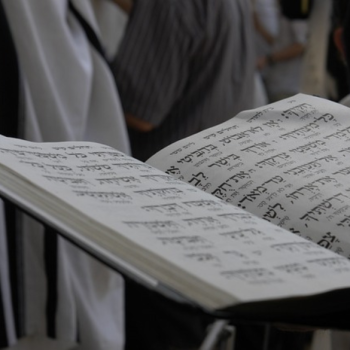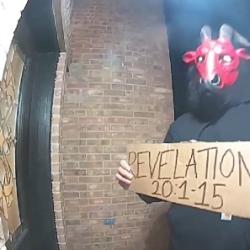This is where the Church's investigators devoted their energies when they went about judging claims of direct divine intervention: was it real or unreal, natural or supernatural? And it's also the approach that still dominates today, including for Mormon students, even if they don't see any juridical process at work around the miracles people claim in their own culture. They still want to know: did the event really happen (in an objective sense) and was its cause divine?
But maybe there's a better question to ask about claimed miracles. While writing a book about miracles, I came across the work of a Catholic psychologist named J. H. van den Berg, whose 1956 book Metabletica offered something beyond the usual "natural" and "supernatural" dichotomy.
Such an approach was unsatisfactory to him because our understanding of what is "natural" changes all the time, thus changing as well the understanding of what is "supernatural." Moreover, this approach tends to severely limit the number of miracles and visions regarded as genuine, as possible natural explanations can often be found. In fact, of the hundreds of thousands of miracles claimed over the centuries, only a small fraction has been judged as genuine.
Better, argued van den Berg, is to regard a miracle as a sense of nearness to God, and that sense is inherently highly subjective. It does not fret about an objective and scientific distinction between nature and super nature.
In other words, the reality of a miracle or vision does not lie in the thing observed, but in the observer.
To illustrate, he uses an example from the French writer André Gide, who as a child went walking in a valley with a young girl; at a certain moment he lost sight of her, but then suddenly she stepped from the trees into the meadow, and with the light shining on her face in such a way as she smiled that suddenly for Gide the valley was filled with love and happiness. Someone else walking past the valley might have looked and seen merely a geological cleft in a geographical landscape. But Gide saw something else that to him was absolutely real, and that made him feel God.
That miracles are rooted within us rather than in God (for again, to God nothing is a miracle) is confirmed, according to van den Berg, in Jesus' saying in Mark that he could do no miracles in Nazareth, for no one believed; he didn't say he would not do them, or that he would do miracles and people just wouldn't see them, but rather that he could do no miracles.
This helps to explain why there will never be consensus as to whether this event or that is a miracle or not: because the miracle depends on the viewpoint of the person looking. And it's not merely about faith. Yes, you must believe in a miracle to see it, but how you believe also matters. For people believe in different ways, and God speaks to them in their own language, according to the Doctrine and Covenants.
Which means not only that God may speak to people in ways we find strange (Balaam's ass, anyone?), but that the way God speaks to us is strange as well.
And if our miracles and visions are strange and subjective, but real, then there is no reason that the apparently strange encounters of a Spanish nun in the 16th century were any less real.
The key is whether a person feels the nearness of God, and who but the person can judge that? Maybe we feel it in silly ways sometimes, or fool ourselves into thinking that this or that is God. But we learn from such experience and perhaps find the nearness more easily as we go.
Maybe this highly subjective approach is also inherently wishy-washy: "then people can claim anything as a miracle or vision!" This is certainly how I feel sometimes listening to claimed miracles in church, when I start longing for the sort of juridical process that would greatly restrict such claims. But then I remember Gide, and the boy in the magical valley in France. And I think of Emerson's insistence that a true religious experience must be an original religious experience -- thus your own encounter with God, not someone else's encounter with God.
By the end of the discussion, most students have come to this conclusion themselves, and the distress has abated. Until the next interesting time around.
Craig Harline teaches history at Brigham Young University, focusing on the religious history of Europe. One class deals with Miracles. His publications include Miracles at the Jesus Oak: Histories of the Supernatural in Reformation Europe (Doubleday, 2003, soon to be released in paperback by Yale University Press) and Sunday: A History of the First Day from Babylonia to the Super Bowl (New York: Doubleday, 2007).




